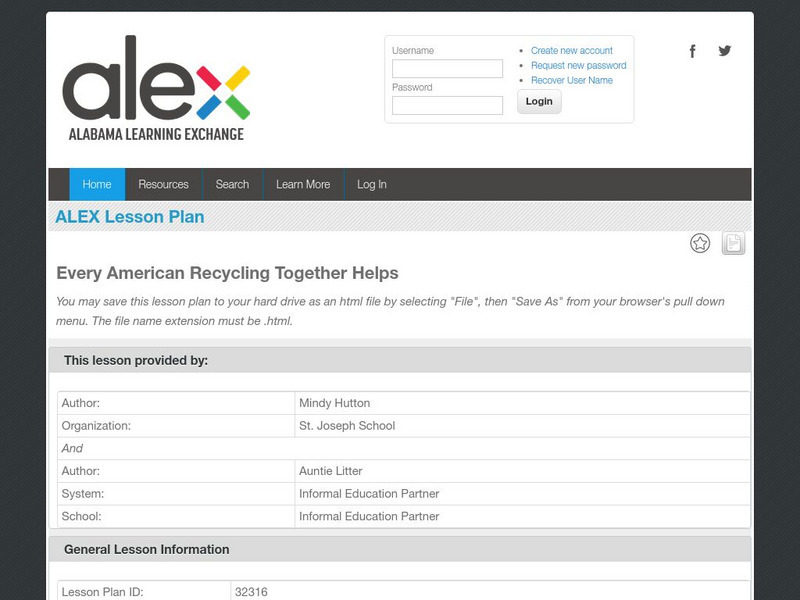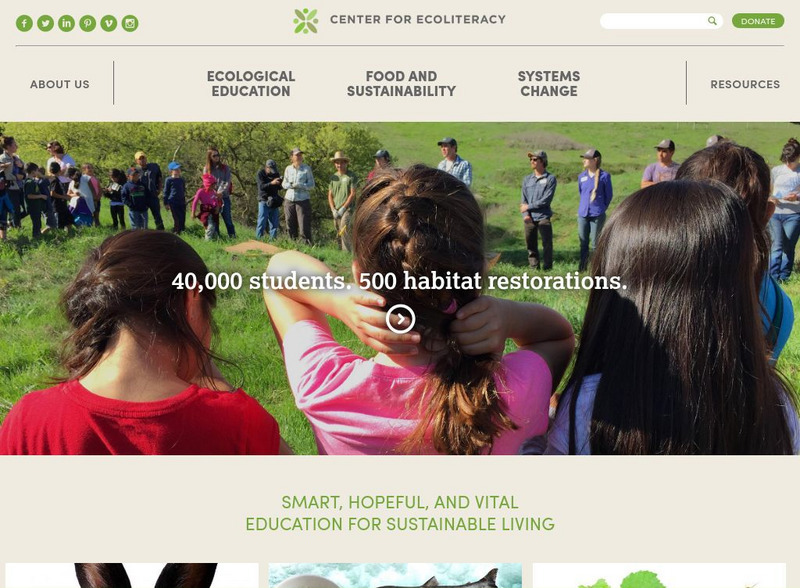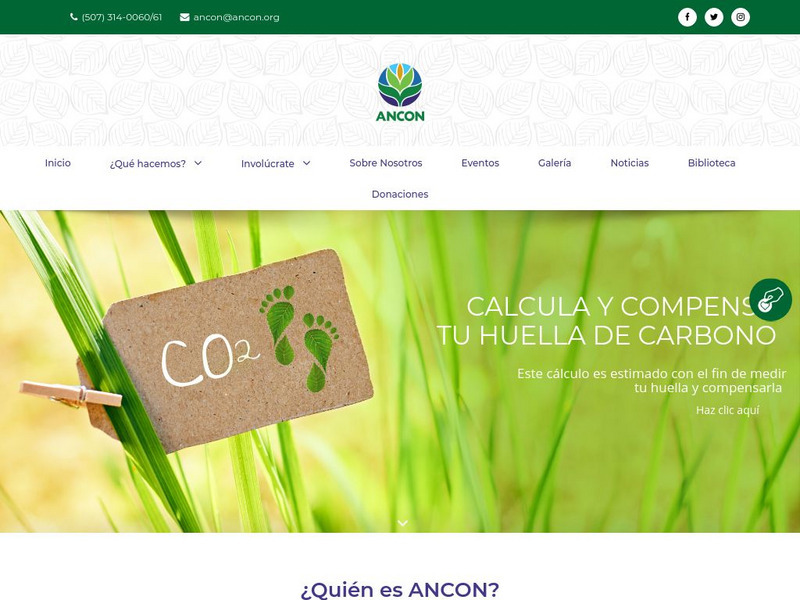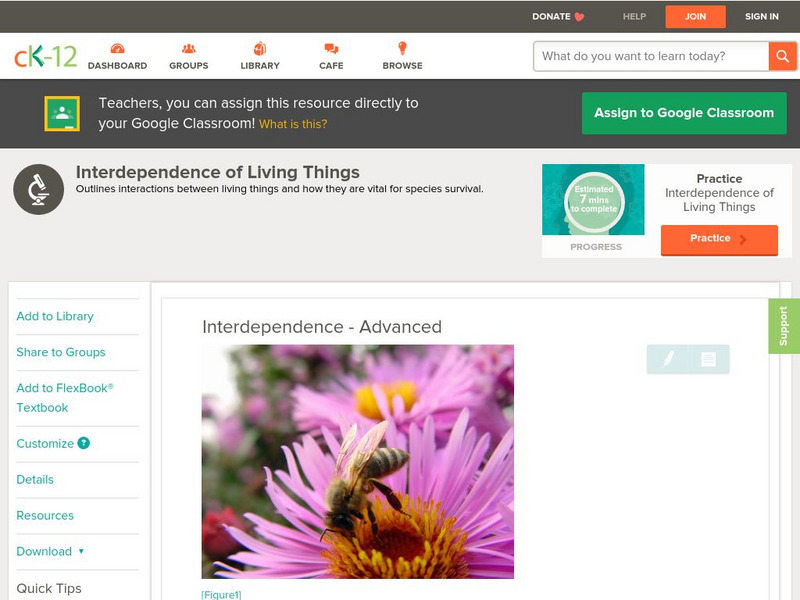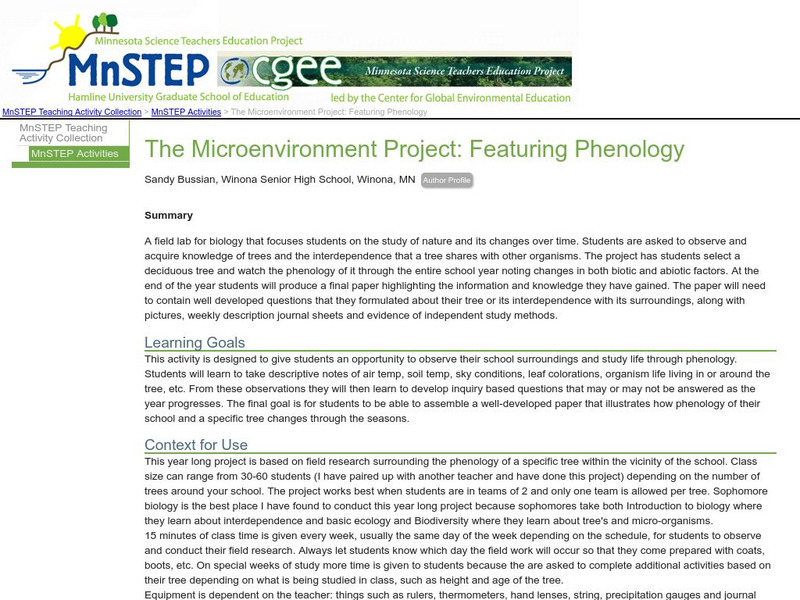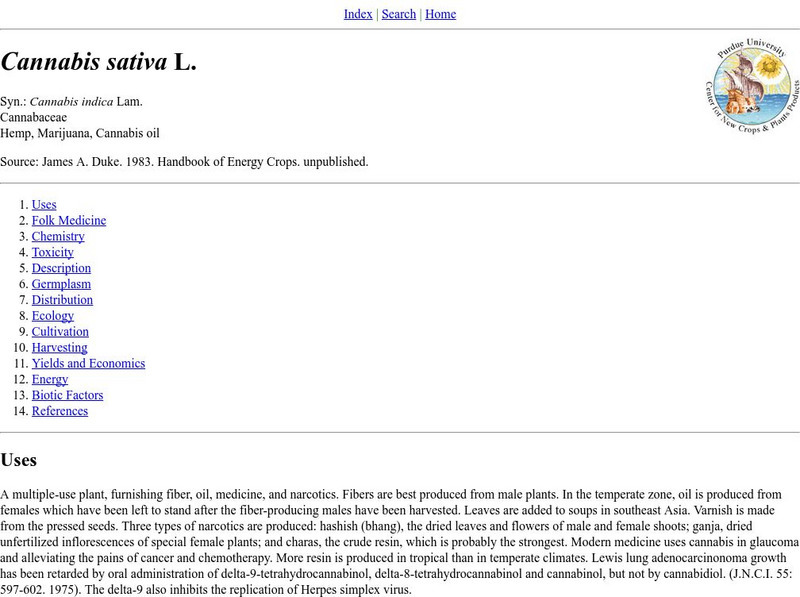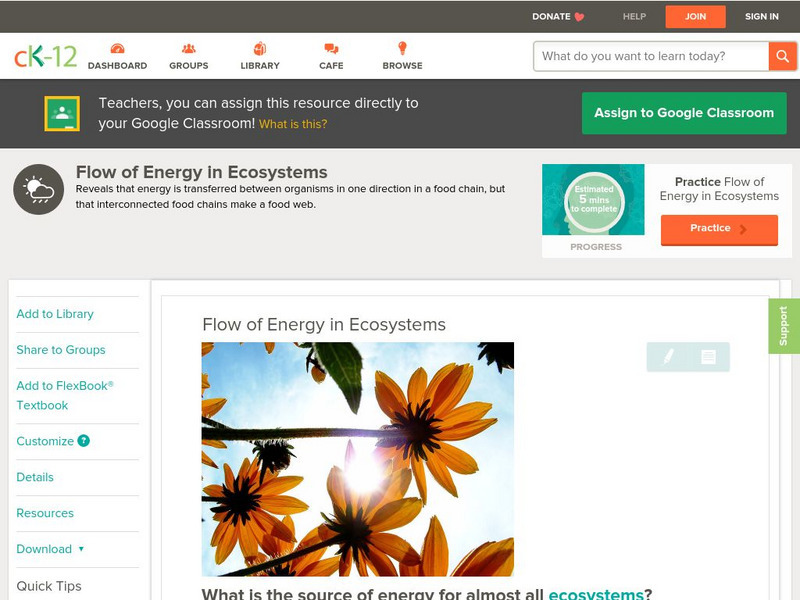Hi, what do you want to do?
PBS
Pbs Teachers: Scientific American: Alien Invasion: Unwanted Travel Partners
Perform an experiment to observe inadvertent transfer of organisms when new fish are transplanted into tropical aquariums. Apply this knowledge to explain how alien species can rapidly destroy the established ecological balance in an...
Cosmo Learning
Cosmo Learning: Sustainable Living
A collection of video lectures from a unique course taught at the University of California, Los Angeles on sustainable living. The lectures range in topics from food systems to organic gardens. The lecturers also vary in their expertise...
Other
Get Oil Out! (Goo)
This is the official website of GOO, a non-governmental organization devoted to protecting the environment from the oil industry.
Alabama Learning Exchange
Alex: Every American Recycling Together Helps
Lesson where students learn about recycling by collecting trash from the schoolyard and watching a podcast about recycling. Additional activities are provided corresponding to different subject areas, such as reading, math, social...
Discovery Education
Discovery Education: The Dirt on Soil
This interactive website explores the various soil layers and introduces you to the lifeforms that live in those soil layers.
Other
Center for Ecoliteracy
Learn of an organization that is providing support to educators to teach ecologically sustainable skills to children. Includes details on grants, resources, and projects.
Utah Education Network
Uen: Biological Energy Food Chain Practice
After reviewing the roles of consumers, producers and decomposers, you'll create your own food chains using pictures from magazines. The site also has 18 questions to see if you can identify the ecologic role played by various organisms.
FT Exploring
Ft Exploring: The Flow of Energy Through Plants and Animals
Explore the different ecological roles of organisms in the ecosystem, and find out how the energy flows through them.
Other
Ancon Homepage
This is the homepage of ANCON, an environmental organization whose goal is to conserve the biodiversity and natural resources of Panama. The page contains links to learn more about their organization as well as beautiful pictures of the...
CK-12 Foundation
Ck 12: Life Science: Predation
[Free Registration/Login may be required to access all resource tools.] Predation is another mechanism in which species interact with each other. Predation is when a predator organism feeds on another living organism or organisms, known...
Sheppard Software
Sheppard Software: Parts of the Food Chain: Producers, Consumers, Decomposers
Learn how scientists classify different types of organisms in an ecosystem or in a food chain by their role and function as either a producer, a consumer, or a decomposer. Then play a game that tests your understanding of these important...
CK-12 Foundation
Ck 12: Biology: Interdependence of Living Things
[Free Registration/Login may be required to access all resource tools.] Covers interactions between organisms.
CK-12 Foundation
Ck 12: Life Science: Competition
[Free Registration/Login may be required to access all resource tools.] Ecology is the study of how living organisms interact with each other and with their environment. Organisms interact with each other through various mechanisms, one...
Science Education Resource Center at Carleton College
Serc: Bio Media Associates: Learning Programs for Biology
This site provides photographs, animations, essays, teaching resources, multimedia, and other information about biological systems and organisms. It features a monthly contest and quiz in which students and teachers identify a mystery...
US Geological Survey
Lake Pontchartrain Basin Foundation: Ecosystems in Delicate Balance
Learning activities to investigate how organisms interact in a functioning ecosystem. Students will explore the role organisms play in food chains and preserving biodiversity in ecosystems. Lake Pontchartrain Basin ecosystem is featured...
Other
Biology at Shaw High School: What Do Living Things Need to Survive?
Discusses the interrelatedness of all living things and of ecosystems and biomes, and what organisms need to survive and to maximize the carrying capacity of an ecosystem. This explanation is followed by a series of activities including...
Science Education Resource Center at Carleton College
Serc: The Microenvironment Project: Featuring Phenology
A field lab for biology that focuses students on the study of nature and its changes over time. Students are asked to observe and acquire knowledge of trees and the interdependence that a tree shares with other organisms.
Stanford University
Stanford University: Sea Urchin Natural History
Stanford University offers an excellent review of the biology and ecology of sea urchins. After reading the text, try the reproduction/survival game!
Purdue University
Purdue University: Cannabis Sativa L.
This article on Cannabis sativa is organized into fourteen brief sections, each presenting factual information about the Cannabis Sativa plant. Here, read about its uses, as well as its chemical makeup, physical description, and...
Science Struck
Science Struck: Mutualism Relationships
Learn how mutualism benefits the organisms in a symbiotic relationship and what the different types of mutualism are. Provides lots of examples.
ArtsNow
Arts Now Learning: Using Tableau and Role Drama to Examine the Ecosystem [Pdf]
In this lesson, 4th graders use tableaux to dramatize their roles in the food chain of an ecosystem. Next, they write in role arguing why they are important to the ecosystem. This is followed by a debate in the format of a Character...
CK-12 Foundation
Ck 12: Life Science: Flow of Energy
[Free Registration/Login may be required to access all resource tools.] When an herbivore eats a plant, the energy in the plant tissues is used by the herbivore. Every time energy is transferred from one organism to another, there is a...
CK-12 Foundation
Ck 12: Earth Science: Flow of Energy in Ecosystems
[Free Registration/Login may be required to access all resource tools.] Describes how energy is transferred from one organism to another.
CK-12 Foundation
Ck 12: Earth Science: Flow of Energy in Ecosystems
[Free Registration/Login may be required to access all resource tools.] Describes how energy is transferred from one organism to another.








